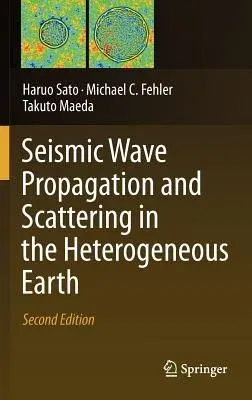Seismic waves - generated both by natural earthquakes and by man-made
sources - have produced an enormous amount of information about the
Earth's interior. In classical seismology, the Earth is modeled as a
sequence of uniform horizontal layers (or spherical shells) having
different elastic properties and one determines these properties from
travel times and dispersion of seismic waves. The Earth, however, is not
made of horizontally uniform layers, and classic seismic methods can
take large-scale inhomogeneities into account. Smaller-scale
irregularities, on the other hand, require other methods. Observations
of continuous wave trains that follow classic direct S waves, known as
coda waves, have shown that there are heterogeneities of random size
scattered randomly throughout the layers of the classic seismic model.
This book focuses on recent developments in the area of seismic wave
propagation and scattering through the randomly heterogeneous structure
of the Earth, with emphasis on the lithosphere. The presentation
combines information from many sources to present a coherent
introduction to the theory of scattering in acoustic and elastic
materials and includes analyses of observations using the theoretical
methods developed. The second edition especially includes new
observational facts such as the spatial variation of medium
inhomogeneities and the temporal change in scattering characteristics
and recent theoretical developments in the envelope synthesis in random
media for the last ten years. Mathematics is thoroughly rewritten for
improving the readability. Written for advanced undergraduates or
beginning graduate students of geophysics or planetary sciences, this
book should also be of interest to civil engineers, seismologists,
acoustical engineers, and others interested in wave propagation through
inhomogeneous elastic media.

